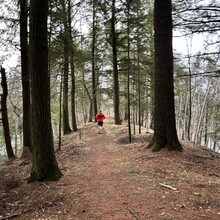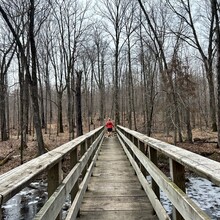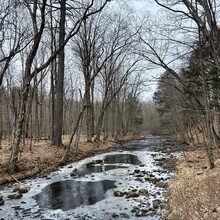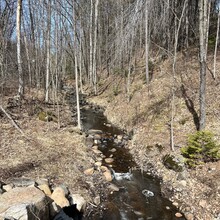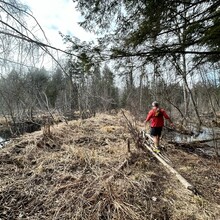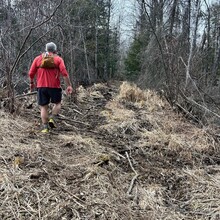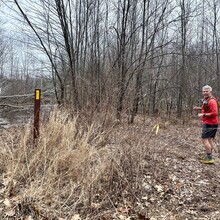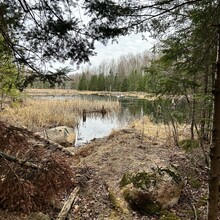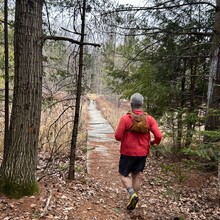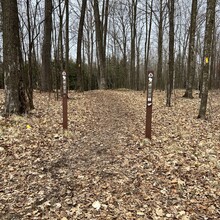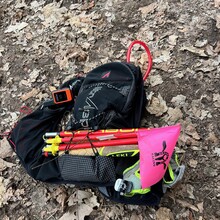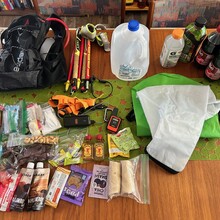The plan to run the IAT Chequamegon National Forest FKT route was inspired by the desire to complete a long self supported effort in March. I'd previously paced with and supported the women who established the first known time on the route. I'd covered all of the miles via training runs and section hikes - but never as an end to end attempt, myself. The idea was brought up to attempt the route. My training partner, Luke, was equally inspired by the ridiculous challenge and so we decided to team up and attempt the mixed gender self-supported FKT.
March would typically be a snowy mess on the trail but the mild winter has provided ideal training conditions. Mother Nature still found a way to mess with us though, as a snow storm popped up for our originally planned date. Not to be thwarted, we adjusted and moved the attempt up a day in order to avoid the snow and take advantage of a beautiful weather day. This proved to be a wise decision. The weather ranged from 15F at the start, to maybe 32F at the finish. Very low wind. It was partially sunny, and we took moments to soak in the warmth during the sparse few opportunities that we were not in full tree cover. We struggled some with frozen hydration hoses and cold hands, but we also benefited from the frozen water crossings and very few mud patches.
We opted to run this route in the opposite direction as the previously recorded women's FKT. The logic had been to end (after vehicle shuttling) at the Mondeaux Dam Lodge for fish fry, but moving the run up a day meant the lodge wasn't going to be open for us. This start location did have the benefit of having bathrooms available, so it still made a good plan. We staged some drop bags (water, soda, snacks) at the northern Sailor Creek / 571 road crossing (approx 13.1mi in) and at the Sawyer Rd crossing (approx 26.5mi in) and otherwise carried everything we needed in our packs.
The run went very smooth. The Mondeaux Esker provided some steep climbs to start out the day, but once on top of the eskers we could move pretty quickly. The roughest section was the eastern end of the Jerry Lake Segment. This was due to long stretches of frozen rutted mud, which twisted ankles in every direction. The western half of Jerry Lake included the mile long Hemlock Esker and a beautiful stretch of trail alongside the South Fork of the Yellow River. The Mondeaux Esker (West) and Jerry Lake Segments flew by and then it was on to the Lake Eleven Segment. This stretch included some long climbs, and the trail got more rugged as we headed towards Hwy 64. The final miles past Trucker Lane included beaver dam crossings and a short reroute due to flooding from beaver activity. This stretch also had the majority of the downed trees that we encountered, but overall the trail was in great shape.
At the finish, we marveled at what a good day it was. The only challenges encountered were with the frozen hydration hoses. The trail was beautiful and we were in good spirits the whole day. We both agreed that doing the run as a team was faster than if we had attempted the route solo. It helped to have the accountability buddy to keep moving and run the runnable hills and technical sections.


